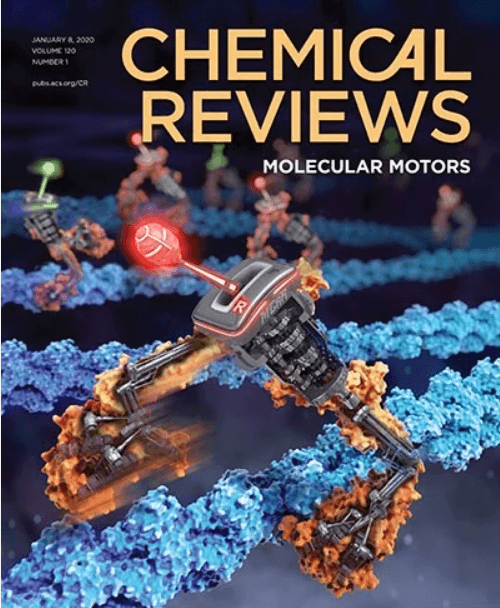Semiconducting Covalent Organic Frameworks
IF 55.8
1区 化学
Q1 CHEMISTRY, MULTIDISCIPLINARY
引用次数: 0
Abstract
Semiconductors form the foundational bedrock of modern electronics and numerous cutting-edge technologies. Particularly, semiconductors crafted from organic building blocks hold immense promise as next-generation pioneers, thanks to their vast array of chemical structures, customizable frontier orbital energy levels and bandgap structures, and easily adjustable π electronic properties. Over the past 50 years, advancements in chemistry and materials science have facilitated extensive investigations into small organic π compounds, oligomers, and polymers, resulting in a rich library of organic semiconductors. However, a longstanding challenge persists: how to organize π building units or chains into well-defined π structures, which are crucial for the performance of organic semiconductors. Consequently, the pursuit of methodologies capable of synthesizing and/or fabricating organic semiconductors with ordered structures has emerged as a frontier in organic and polymeric semiconductor research. In this context, covalent organic frameworks (COFs) stand out as unique platforms allowing for the covalent integration of organic π units into periodically ordered π structures, thus facilitating the development of semiconductors with extended yet precisely defined π architectures. Since their initial report in 2008, significant strides have been made in exploring various chemistries to develop semiconducting COFs, resulting in a rich library of structures, properties, functions, and applications. This review provides a comprehensive yet focused exploration of the general structural features of semiconducting COFs, outlining the basic principles of structural design, illustrating the linkage chemistry and synthetic strategies based on typical one-pot polymerization reactions to demonstrate the growth of bulk materials, nanosheets, films, and membranes. By elucidating the interactions between COFs and various entities such as photons, phonons, electrons, holes, ions, molecules, and spins, this review categorizes semiconducting COFs into nine distinct sections: semiconductors, photoconductors, light emitters, sensors, photocatalysts, photothermal conversion materials, electrocatalysts, energy storage electrodes, and radical spin materials, focusing on disclosing structure-originated properties and functions. Furthermore, this review scrutinizes structure–function correlations and highlights the unique features, breakthroughs, and challenges associated with semiconducting COFs. Furnished with foundational knowledges and state-of-the-art insights, this review predicts the fundamental issues to be addressed and outlines future directions for semiconducting COFs, offering a comprehensive overview of this rapidly evolving and remarkable field.

半导体共价有机框架
半导体构成了现代电子和众多尖端技术的基础基石。特别是,由有机构建块制成的半导体,由于其广泛的化学结构,可定制的前沿轨道能级和带隙结构,以及易于调节的π电子特性,作为下一代先驱,具有巨大的前景。在过去的50年里,化学和材料科学的进步促进了对小有机π化合物、低聚物和聚合物的广泛研究,从而产生了丰富的有机半导体库。然而,一个长期的挑战仍然存在:如何将π构建单元或链组织成定义良好的π结构,这对有机半导体的性能至关重要。因此,追求能够合成和/或制造具有有序结构的有机半导体的方法已成为有机和聚合物半导体研究的前沿。在这种情况下,共价有机框架(COFs)作为独特的平台脱颖而出,允许有机π单元共价集成到周期性有序的π结构中,从而促进具有扩展但精确定义的π结构的半导体的发展。自2008年首次报告以来,在探索各种化学物质以开发半导体COFs方面取得了重大进展,从而产生了丰富的结构,性质,功能和应用程序库。本文对半导体COFs的一般结构特征进行了全面而集中的探讨,概述了结构设计的基本原则,说明了基于典型的单锅聚合反应的连锁化学和合成策略,以展示大块材料,纳米片,薄膜和膜的生长。通过阐述半导体COFs与光子、声子、电子、空穴、离子、分子和自旋等各种实体之间的相互作用,本文将半导体COFs分为半导体、光导体、发光体、传感器、光催化剂、光热转换材料、电催化剂、储能电极和自由基自旋材料等九个不同的部分,重点揭示了其结构起源的性质和功能。此外,本文还详细介绍了结构与功能的相关性,并强调了半导体COFs的独特特征、突破和挑战。本综述提供了基础知识和最先进的见解,预测了需要解决的基本问题,并概述了半导体COFs的未来方向,全面概述了这个快速发展和卓越的领域。
本文章由计算机程序翻译,如有差异,请以英文原文为准。
求助全文
约1分钟内获得全文
求助全文
来源期刊

Chemical Reviews
化学-化学综合
CiteScore
106.00
自引率
1.10%
发文量
278
审稿时长
4.3 months
期刊介绍:
Chemical Reviews is a highly regarded and highest-ranked journal covering the general topic of chemistry. Its mission is to provide comprehensive, authoritative, critical, and readable reviews of important recent research in organic, inorganic, physical, analytical, theoretical, and biological chemistry.
Since 1985, Chemical Reviews has also published periodic thematic issues that focus on a single theme or direction of emerging research.
 求助内容:
求助内容: 应助结果提醒方式:
应助结果提醒方式:


